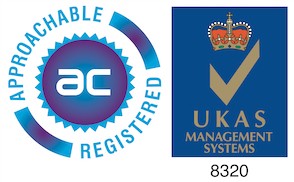Guest Blog from Age Verification Providers Association

Iain Corby, Executive Director, AVPA
Looking forward to 2021, it is certainly going to be a pivotal year for the age verification sector . I thought I would take this opportunity to look into a crystal ball and sketch out how the year may play out.
First of all, I would predict that this will be the year when the distinction between identity verification and age verification emerges more clearly. To date, the focus has been on preserving anonymity in only the adult content sector. However, as laws and regulations begin to bite which require websites to have a fairly strong idea of the age of each of their users in order to serve only age-appropriate content, there will be a realisation that this could easily lead to children bandying about their personal identity data all over the Internet. This is clearly undesirable and, ironically, itself often illegal if the child is too young to give consent for that data to be processed by the website with which they are engaged. The time and effort invested by the age verification sector in protecting the privacy of adults visiting pornographic websites will now come into its own for a far wider purpose, namely the protection of children’s data.
Secondly, the distinction between proving your age directly to a website where you would be required to share identification and doing so through an independent third-party age verification provider is going to become far more widely appreciated. The age verification specialist can be tightly regulated to ensure that its systems comply with GDPR, particularly in respect of the requirement for data minimization but also in terms of data security, and not to mention also delivering reliable age attributes.
Thirdly, we will begin to discern the difference between age verification and age assurance. The latter is a term which has been introduced by government to refer to forms of age check which rely on technology such as artificial intelligence which means they do not require a full identity check as the basis of their conclusion about a user’s age. This is quite hard to explain at the moment because there are few, if any, working examples of age assurance other than facial analysis. In fact, this particular solution complicates the matter because it is possible to achieve such a high degree of confidence in the age range of a user from facial analysis that it becomes verification. (Just to illustrate, if you use the technology to test for an age higher than the required age for any given legal purpose then you can be 99.99% sure that the user is above the age required by law provided the difference between the test age and the legal age provides a wide enough margin for error).
Fourth, there will be a rush to develop technology which can assess the age of children below 18 in order to ensure that they are not exposed to content which may be harmful to their mental or physical well-being. While this is a specific and explicit requirement of the UK’s Age-Appropriate Design Code, it is a natural and logical conclusion when you read GDPR that all websites regulated by EEA states should be doing this.
And finally, there will be a panic when Cyprus implements the Audio-Visual Media Services Directive into domestic law and the adult sites based there are, overnight, required to implement strict age verification for all of their users across the European Union. This may be followed quickly by high profile enforcement action which will prompt much of the adult sector which has its business established in Europe to fall into line with this new requirement.
This exercise is not entirely fair, as the AVPA will be in many cases driving these changes by raising awareness, developing standards and building the profile of the age verification sector and its world-leading technical capabilities. But let’s see where we get to by December 31st!





